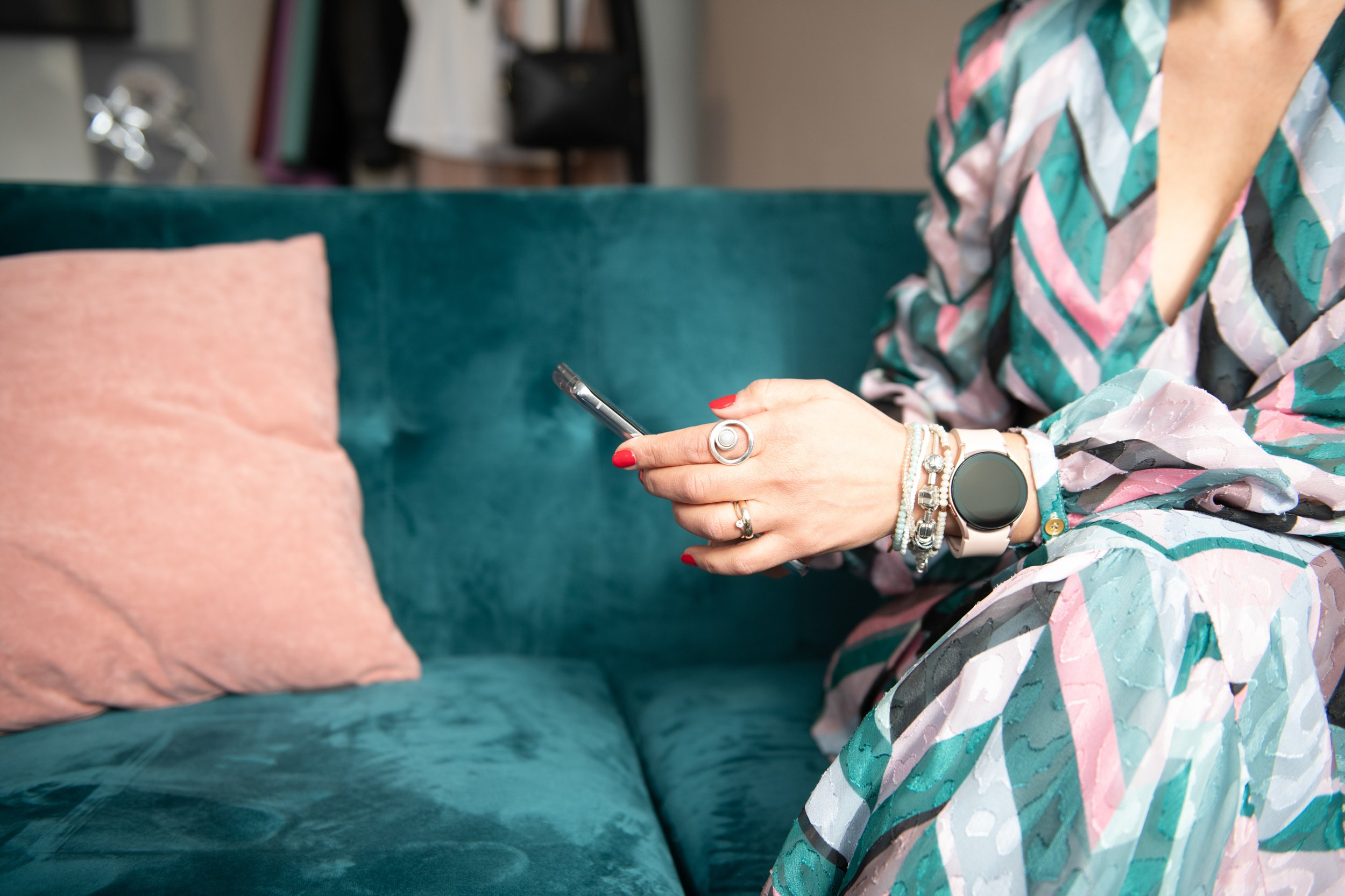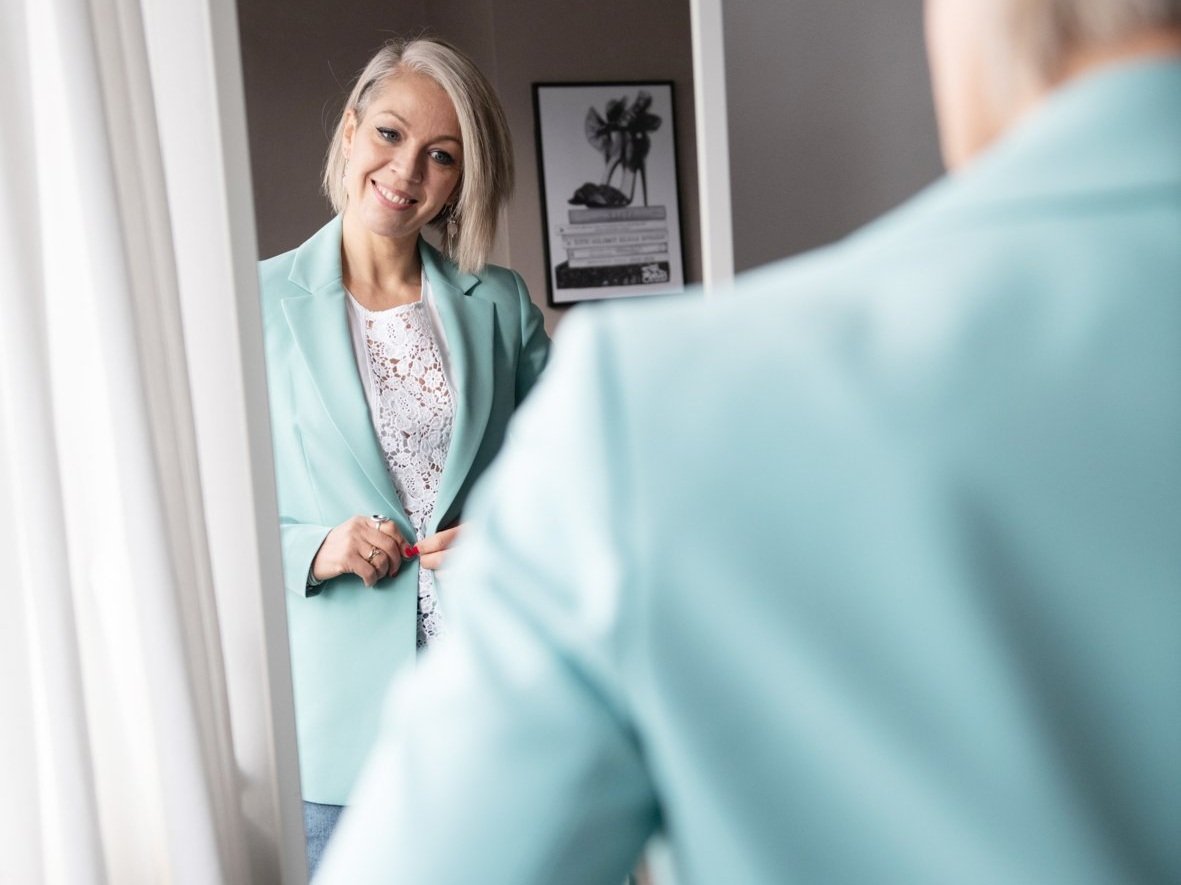PERSONAL STYLIST TIPS: UNDERSTAND BODY SHAPES AND HOW TO DRESS FOR CONFIDENCE
Understanding our body shape is crucial if we want to feel more confident with what we wear. Apart from the shape and the proportions of our body though, it is absolutely important to consider how to dress all the individual parts of your body, rather than the entire body all at once. One of the first thing I do with clients is to determine their features, so if they are angular or curvy, and some people might have a mix and so be interjacent.
This helps to point in the right direction for choosing the best clothes, and fabrics to complement and suit our body to the best. Crispy fabrics and structured shapes, but also geometric (popelin shirts, cottons, structured blazers and jackets, geometric patterns, etc..) will suit best angular body features, while deconstructed shapes, soft fabrics and patterns (jerseys, viscose and silk, blouses, and “romantic” patterns like paisley, dots and flowers) will complement best curvilinear body features.
In order to determine if our features are angular, curvilinear or interjacent, a little exercise to do is to stand in front of a mirror in clothes that show your shape off. Look at your shoulders, are they straight across or do they slope down? Then, stand sideways, still looking into the mirror: do you have a straight back and flat bottom; or do you have a curved back and curvy bottom? Once you have determined which bits of you are straighter or curvier, you need to consider the actual construction of your clothes. Angular bodies, or sections, need straighter constructions; curvier bodies need softer and more shaped constructions. Interjacent people, will have to choose different clothing lines and structures depending on the different sections of their body.
Now, let’s dig into the body shapes: there are 6 different kinds of body shapes:
TRIANGLE (or so-called pear), INVERTED TRIANGLE, RECTANGLE, OVAL (or so-called apple), NEAT HOURGLASS and FULL HOURGLASS.
The difference stands mainly in the proportions between shoulder, hips and waist: when shoulder and hips are balanced (same width) they can either have a defined waist or a non-defined waist. In the first case, most luckily we deal with an hourglass (that can be neat or full..will explain more later on) while a non-define waist means we have either an oval or a rectangle body shape.
When the shoulders are wider than the hips, we are in front of an inverted triangle, as opposed to the triangle, where the hips are wider than the shoulders.
Now, let’s see shape by shape what this means:
1. Neat Hourglass: is characterized by a defined bust a defined waist, a neat bottom, and neat hips and have a naturally balanced body and also a defined waist, and while they have a wide range of choice, in terms of clothing styles, they should always try to keep this balance and also, and show off their body by wearing clothes that define the waist, enhance the bust and highlight hips and bottom. While they should avoid wearing clothes that hide their body line. So anything with waist definition is a “go-to”, while buggy, boxy and shapeless clothes are not recommended. Neat Hourglasses can wear most fabrics and patterns, as long as they complement their features (angular, curvilinear, interjacent).
2. Full Hourglass: you don’t hear about this body type often, many just talk about the “hourglass” generically, but some women, still having balanced shoulders, hips and a defined waist, have a full bust, a rounded bottom, and rounded hips and for them, rules differ a bit from neat hourglasses, and it’s important to wear clothes that follow their body line and curves, instead of those that are straight and constricting. In this case, I recommend choosing fabrics carefully and avoiding heavy or stiff fabrics, but rather opt for fluid, soft fabrics and more deconstructed shapes, like waterfall jackets, cardigans (and knitwear in general), crossovers or wraps tops and dresses, in soft fabrics, and as for patterns it’s preferable to avoid geometric patterns, and instead opt for more fluid shapes (spots, florals, paisleys).
3. Oval: usually has rounded or sloping shoulder line, curved back, flattish bottom, fullness around the middle and indeed the critical area is the central torso. My best recommendations for oval body shapes are:
-Draw eye attention to the area above your bust and below your hips. In order to do that play with accessorise (scarves, necklaces, earrings, hats) so keep any detail above the bust line and below the hip line.
-Create the impression of a slimmer body, so create optical verticality through the use of shapes and clothing lines. Wearing coats/jackets or cardigans which are longer than the hips line is a great way to do this.
-Clothing lines need to be straight, and fabrics soft to avoid any unnecessary volume or bulkiness.
-Opt for deconstructed shapes, simple lines and plain colours on the bust.
-Choose soft, fluid fabrics that hang well and don’t cling or hug the figure, and go for muted and subtle patterns.
4. Rectangle: Once again, hips and shoulders are balanced, but the waist is straight and undefined. Rectangle body types usually have flat hips and a flat bottom, however, some Rectangles can have a fuller bust, which gives a softer edge to their shape. Their main aim is to soften those edges even more and create the appearance of curves. This body type is characterized by a straight shoulder line, straight hips and bottom, very little waist definition, straight ribcage. I recommend using details on hips and bottom to create shape while avoiding details at the waist (such as noticeable waistbands or belts) and keeping the clothing line straight and structured. Most Rectangles can wear crisp fabrics, but those with a full bust, need to opt for softer fabrics, and generally geometric patterns work best for them.
5. Inverted Triangle: in this case, shoulders are wider than hips, and the waist is not defined. The body type is characterized by a straight and squared shoulder line, with flattish hips and bottom. I recommend highlighting the hips and bottom, focusing all attention below the waist. Shoulders are generally straight and squared, while hips and bottom are quite flat. Inverted triangles need to minimize details on their shoulders and keep this area as simple as possible while focusing the attention on their legs through, shapes, colours and details. Clothing line needs to be straight, clean and sharp. Halter neck is their neckline! jackets should be constructed and shaped with angular lines (like revered collars) and with no belts, while skirts should be straight and trousers used to add details to the legs and bottom (classic jeans are a perfect style!). I also recommend crisp, constructed fabrics and geometric patterns (like stripes and checks)
6. Triangle: as the name suggests, the bottom part is wider than the top, so the shoulders (and the top half in general) appears smaller than hips and the bottom part of the body, and usually the waist is well defined while shoulders may be slope. As opposed to Inverted Triangles, Triangles need to focus the attention on the top part of their body, through shapes, volumes, details, patterns and colours, and create the optical illusion of wider shoulders, while enhancing their waist with belts and waist-cuts, and minimize details and volume at the bottom. Soft, fluid fabrics work best for the bottom half, while it is recommended to opt for more volume and structure on the top part, to create a balance.
These are general guidelines, but everyone has their own, unique body and features, and there might be differences between two or more people fitting into the same body shape category. So while these tips can help to understand the different body types, it is always preferable to ask the help of an expert that can give personalized and customised advice.
This is an extract from the article published on Pick Me Up! Magazine 3 March issue
Publication: Pick Me Up! Magazine (c: 55,608) - Your Style - Dressing for you. Date: 3 March 2022.
If you would love to help in discovering the best outfits for your body shape, I’d love to help. Get in touch to find out more about my personal style masterclass and personal styling services.




